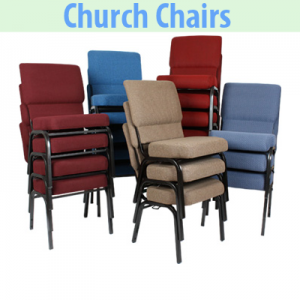This is my last article in a series that has been examining the seven key criteria that churches should consider as they pursue church seating solutions for their various environments. As I have visited and worked with churches across the country for more than 30 years, I’ve found that while there are no two church settings that are identical, church seating needs tend to fit into one of three primary categories of seating. Here’s how I like to communicate these categories to churches.
Permanent Seating: This style of seating continues to dominate most church environments. My use of the descriptive “permanent” does not denote that the seats are affixed to the facility, though that can certainly be the case. Rather the implication is that in this type of application, the chairs rarely need to be moved. The use of the room is quite static throughout the various programs of the church, therefore the “function” of the seating for the room is static as well. The seating needs for the room simply do not vary.
Flexible Seating: With the growing need for worship and other church environments to lend themselves to various applications and uses, the use of flexible seating has increased significantly over the past couple decades. By “flexible” I mean that the seating can be used in different configurations such as in rowed auditorium style seating as well as more informal arrangements such as around tables. These chairs tend to be less bulky and a bit lighter than permanent seating. They also then to cost a bit less. However, the assumption is that they’re consistently being used in the room they’re located in and not stored. If the chairs need to be stored, rather than flexible seating, the description that applies best is transitional seating.
Transitional Seating: With many church environments today, rooms will need to be reconfigured many times during a week. When this is the reality, seating that’s simple to handle and simple to store is important. Some transitional seating options of today can be stored in 25% the space it takes to hold a comparable level of permanent seating. Transitional seating tends to be very strong and will weigh far less than what permanent and flexible seating will. While these types of chairs will be more expensive, they can be a wise investment over the years of use they’ll provide.
For a visual overview of these three types of church seating, check out this presentation from Church Furniture Partner.

